The loss of a limb is not just a physical experience, but an emotional and psychological one as well. For those who rely on prosthetics to regain independence, the journey can be a mix of challenges and triumphs. While prosthetics enable mobility and functionality, they also play a profound role in shaping an individual’s mental health and self-image. Understanding this impact is crucial for creating a supportive environment and helping individuals navigate the emotional complexities that come with limb loss and prosthetic use. In this article, we’ll explore the deep connection between prosthetics, mental health, and self-perception, and how those who wear prosthetics can embrace their new reality with resilience and confidence.
The Emotional Journey of Limb Loss
Losing a limb is a life-altering event. For many, it’s accompanied by a wide range of emotions, including grief, frustration, and fear. The physical pain of surgery or injury is often compounded by the emotional pain of adjusting to a new way of life. This process of grieving a lost limb can be compared to mourning any significant loss—it involves stages like denial, anger, bargaining, depression, and, finally, acceptance.
One of the most significant challenges is coping with the sudden change in physical appearance. Many individuals struggle with feelings of incompleteness, which can lead to a distorted self-image. The emotional toll of adjusting to this new reality is heavy, but it’s important to remember that it’s entirely normal. With time, support, and the right resources, acceptance becomes possible, and the journey to emotional healing can begin.
Prosthetics: A Gateway to Empowerment
Prosthetics offer a powerful solution for restoring physical abilities, but they are more than just functional tools—they are symbols of resilience and empowerment. For many individuals, getting a prosthetic is the first step toward reclaiming their independence. The ability to walk, hold objects, or even engage in favorite hobbies once again can reignite a sense of normalcy and confidence. This is a critical part of the emotional healing process.
When someone can resume daily activities that seemed impossible after losing a limb, it can significantly boost their self-esteem. The idea that “I can do this” reinforces a positive self-image. Prosthetics not only bridge the gap between disability and ability but also between a diminished self-image and a strong, resilient one. While it may take time, prosthetic users often find themselves feeling more in control of their lives and their futures, something they might not have imagined in the early days of limb loss.
The Role of Self-Image
Self-image plays a crucial role in mental health, and for many prosthetic users, the way they see themselves evolves over time. Initially, wearing a prosthetic might feel foreign or uncomfortable. Some individuals may feel self-conscious about their prosthesis, especially in social settings. The fear of judgment or unwanted attention can lead to isolation or avoidance of social situations.
However, it’s essential to recognize that self-image is not static—it can be reshaped, just like any other part of the healing process. Many prosthetic users eventually embrace their new image and view their prosthetic as a part of who they are, rather than something that defines or limits them. In fact, some users even personalize their prosthetics, adding designs or choosing colors that reflect their personality, making their prosthetic a statement of individuality rather than a symbol of loss.
Body Image and Social Perception
The social perception of individuals with prosthetics has evolved significantly over time. Society is gradually moving away from stigmatizing disabilities, thanks in part to more visible role models in sports, media, and the arts who use prosthetics. Athletes like Paralympians, musicians, and public speakers are celebrated for their achievements, which has helped to normalize prosthetics and change the way society views limb loss.
This shift in social perception can have a profound impact on an individual’s self-esteem and body image. Seeing others thrive with prosthetics can be a source of inspiration and reassurance for those going through the adjustment process. Positive representation in the media, social acceptance, and community support can all contribute to a healthier body image and reduced feelings of shame or insecurity.
It’s important to remind yourself that you are not defined by what society may think or expect. Rather, you are defined by your inner strength, your unique story, and your perseverance. The more comfortable you become in your skin, the more your self-image will reflect the powerful person you truly are.
Mental Health and Prosthetic Adaptation
Mental health is a critical factor in how well someone adapts to using a prosthetic. The adjustment period can vary greatly depending on the individual, the type of limb loss, and the circumstances surrounding it. Some people may find it relatively easy to adapt, while others may face psychological hurdles such as anxiety, depression, or post-traumatic stress disorder (PTSD).
In these cases, mental health care is just as important as physical rehabilitation. Therapy, counseling, and support groups can provide a safe space for prosthetic users to express their feelings and work through emotional challenges. For many, talking openly about the experience of limb loss and prosthetic use helps reduce feelings of isolation and promotes emotional healing.
Physical rehabilitation and mental health care often go hand in hand. A strong support system, whether it’s friends, family, or professional mental health services, can make all the difference. It’s okay to seek help, and it’s okay to acknowledge that adapting to life with a prosthetic can be emotionally challenging. By addressing mental health needs, individuals are more likely to experience positive outcomes in their adaptation process.
Building Resilience and a Positive Outlook
Resilience is not something that happens overnight, but it is something that can be built over time. As individuals adapt to life with a prosthetic, many discover a newfound strength within themselves. The challenges they face and overcome become a testament to their resilience. This, in turn, can foster a more positive outlook on life and a deeper appreciation for what they can still achieve.
One of the keys to building resilience is focusing on progress, not perfection. Every small victory—whether it’s walking independently, performing a new task, or simply feeling comfortable in public—contributes to a greater sense of accomplishment. It’s important to celebrate these milestones and recognize how far you’ve come, rather than focusing on any perceived limitations.
Conclusion: Embracing a New Self
The impact of prosthetics on mental health and self-image cannot be understated. While the journey may be challenging, it is also filled with opportunities for growth, empowerment, and self-discovery. With the right support and mindset, individuals can redefine their sense of self, embracing their prosthetic as part of who they are without letting it limit their potential.
Remember, you are not alone in this journey. There is a community of individuals who have walked the path you are on and who have emerged stronger, more confident, and empowered. You too can build a positive self-image, strengthen your mental health, and live a fulfilling, independent life with your prosthetic. You are resilient, and you are capable of overcoming any obstacle life throws your way.



